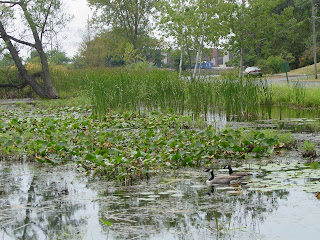When this grant was paid in advance, they gave us $9,000 of the $10,000 grant, with the requirement that the remainder would not be paid until the grant report was submitted and they were satisfied with our report. Well, lo and behold, yesterday we received a nice letter from Indiana American Water congratulating us on our progress thus far and giving us the remaining $1,000!
With this $1,000, we have approximately $3,802.77 left of the Indiana Amercian Water grant. We are setting aside $500 for potential future rain garden needs, allowing the remainder to be used as match on the Long Lake Marsh Restoration project (LLMRP).
This development brings our total match to date on the LLMRP to $9,901.88! And, as soon as the Fire Department conducts their burn, we can use the value of their equipment and their time as in-kind match, totaling $6,265 according to Eric Kurtz’ estimates from a year ago when we prepared our grant application. If so, that would bring our total match to $16,166.88, exceeding our required match of $15,700!!!! Most importantly, that would mean that NONE of this project will have to be conducted using taxpayer dollars. The other $15,700 will be reimbursed by the federal government.













